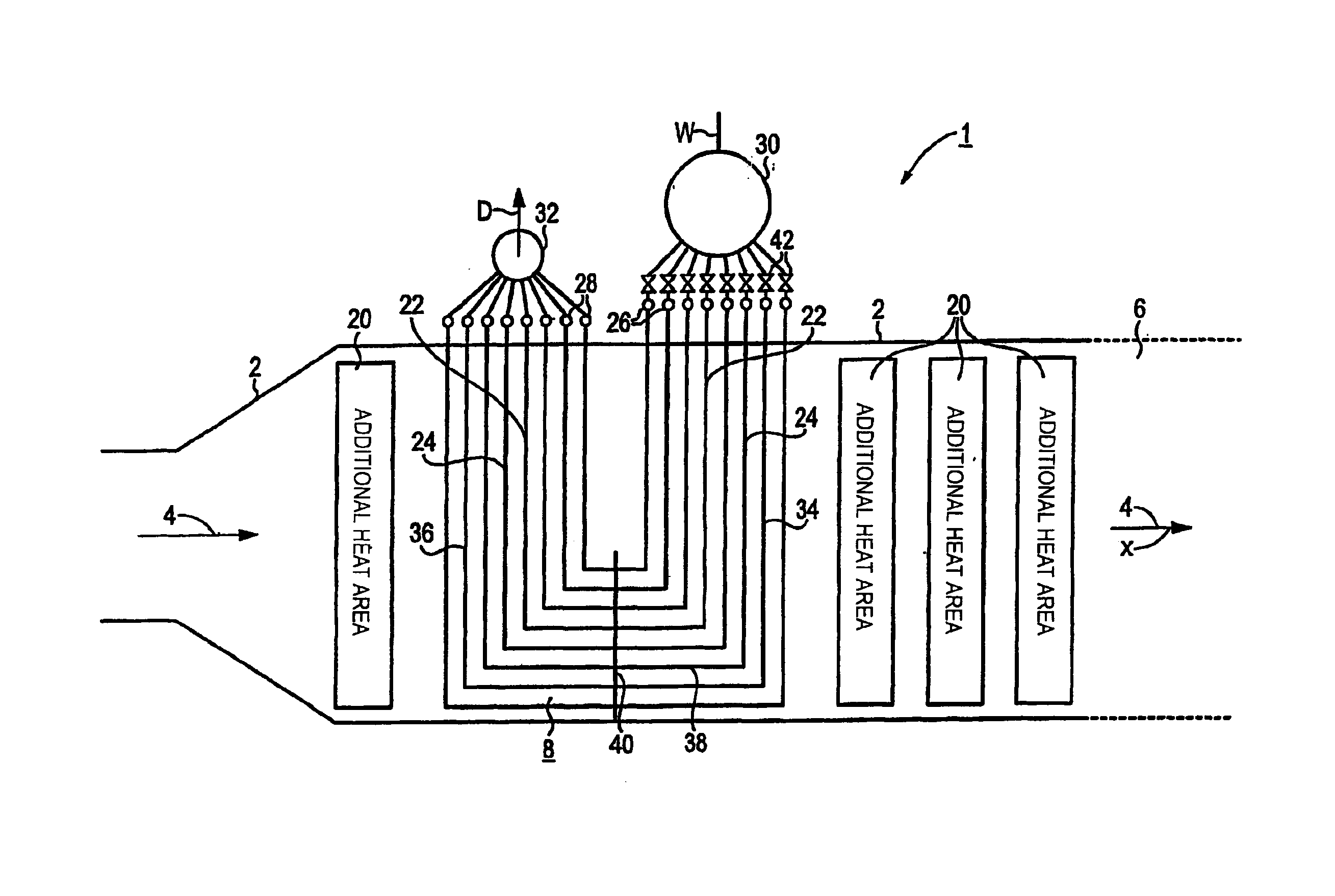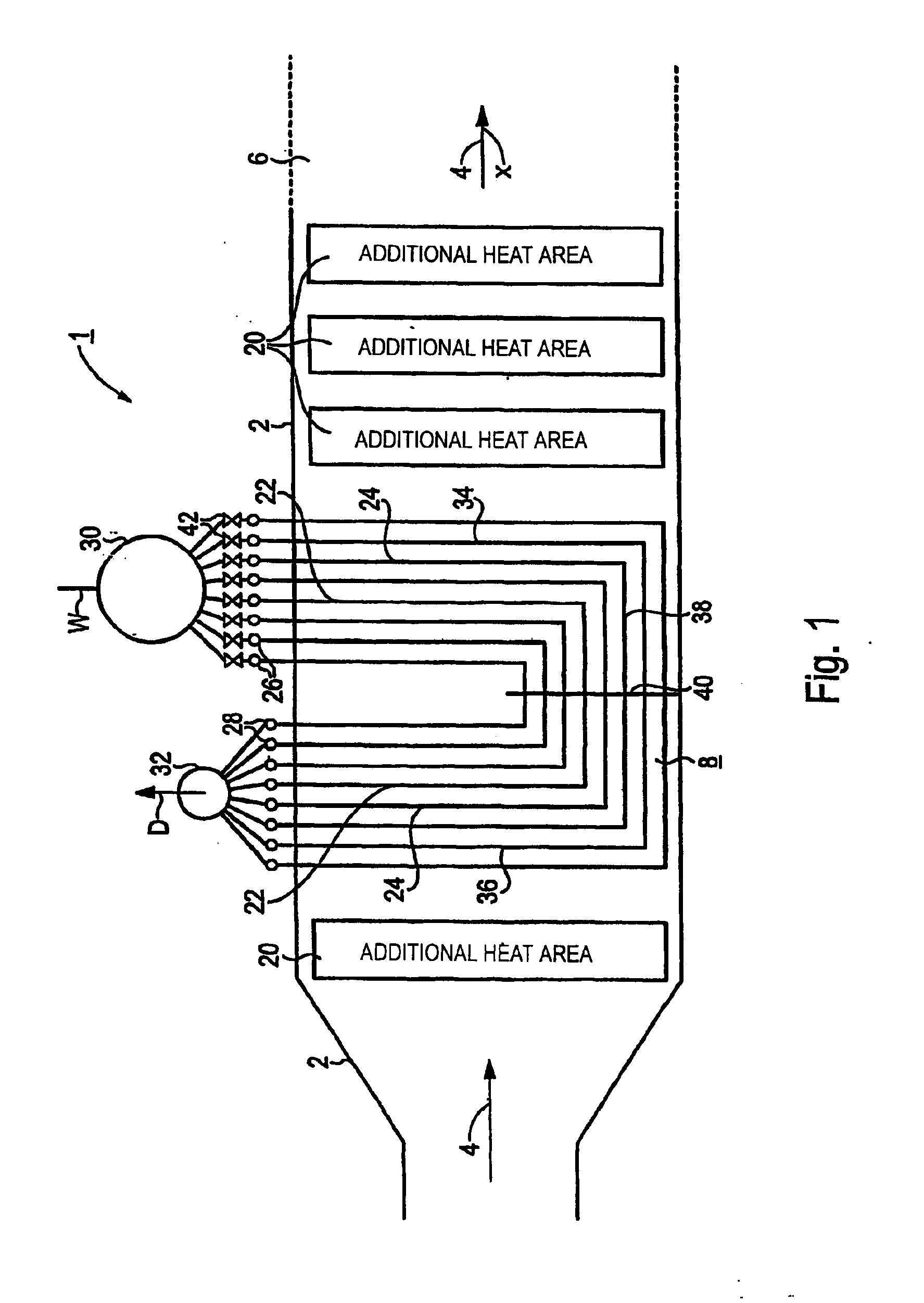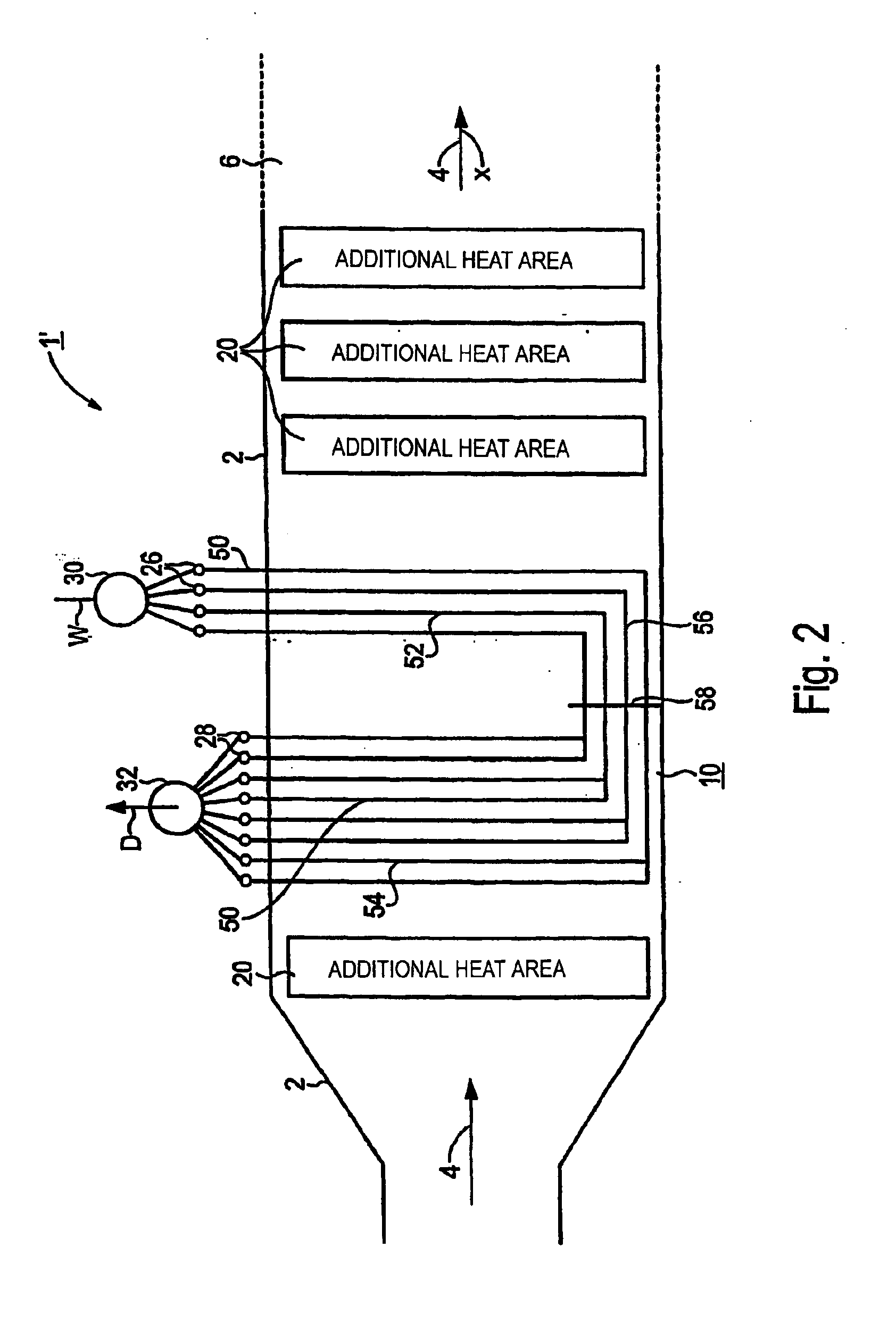Steam generator
a generator and steam technology, applied in the direction of steam generation using hot heat carriers, machines/engines, lighting and heating apparatus, etc., can solve the problems of reducing the effectiveness of the relevant heating area, unsatisfactory efficiency losses, and reducing steam generation, so as to achieve stable and reliable flow, low friction pressure loss, and high flow rate
- Summary
- Abstract
- Description
- Claims
- Application Information
AI Technical Summary
Benefits of technology
Problems solved by technology
Method used
Image
Examples
Embodiment Construction
Reference will now be made in detail to the preferred embodiments of the present invention, examples of which are illustrated in the accompanying drawings, wherein like reference numerals refer to like elements throughout.
The same parts are provided with the same designations in all the figures.
The steam generator 1, 1′, 1″ according to FIGS. 1, 2 and 3, respectively, is arranged like a heat-recovery steam generator on the exhaust-gas side downstream of a gas turbine (not shown in any more detail). The steam generator 1, 1′. 1″ has in each case an enclosing wall 2 which forms a heating-gas duct 6 for the exhaust gas from the gas turbine, through which heating-gas duct 6 flow can occur in an approximately horizontal heating-gas direction x indicated by arrows 4. A plurality of heating areas designed according to the once-through principle, and also referred to as once-through heating areas 8, 10 and 12, respectively, are arranged in each case in the heating-gas duct 6. In the exempla...
PUM
 Login to View More
Login to View More Abstract
Description
Claims
Application Information
 Login to View More
Login to View More - R&D
- Intellectual Property
- Life Sciences
- Materials
- Tech Scout
- Unparalleled Data Quality
- Higher Quality Content
- 60% Fewer Hallucinations
Browse by: Latest US Patents, China's latest patents, Technical Efficacy Thesaurus, Application Domain, Technology Topic, Popular Technical Reports.
© 2025 PatSnap. All rights reserved.Legal|Privacy policy|Modern Slavery Act Transparency Statement|Sitemap|About US| Contact US: help@patsnap.com



